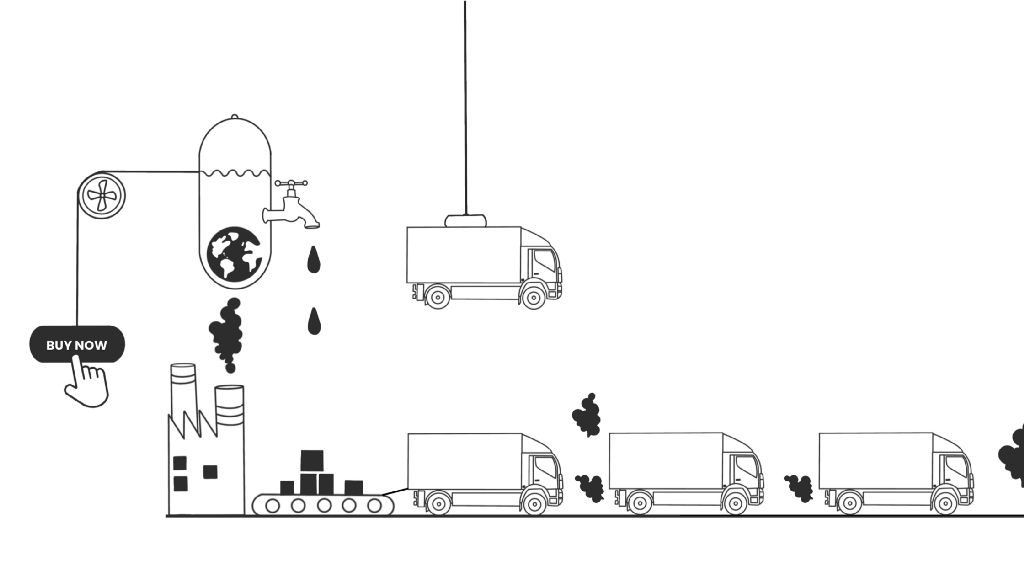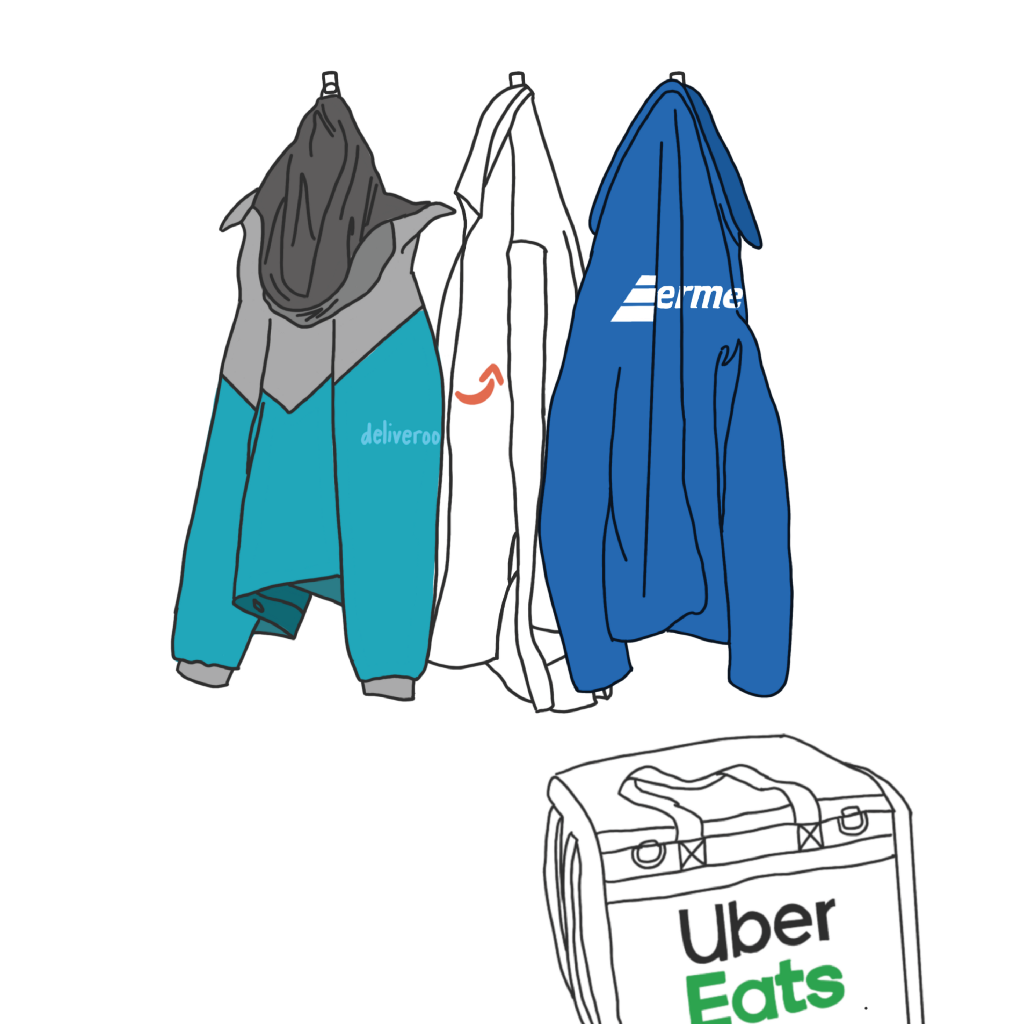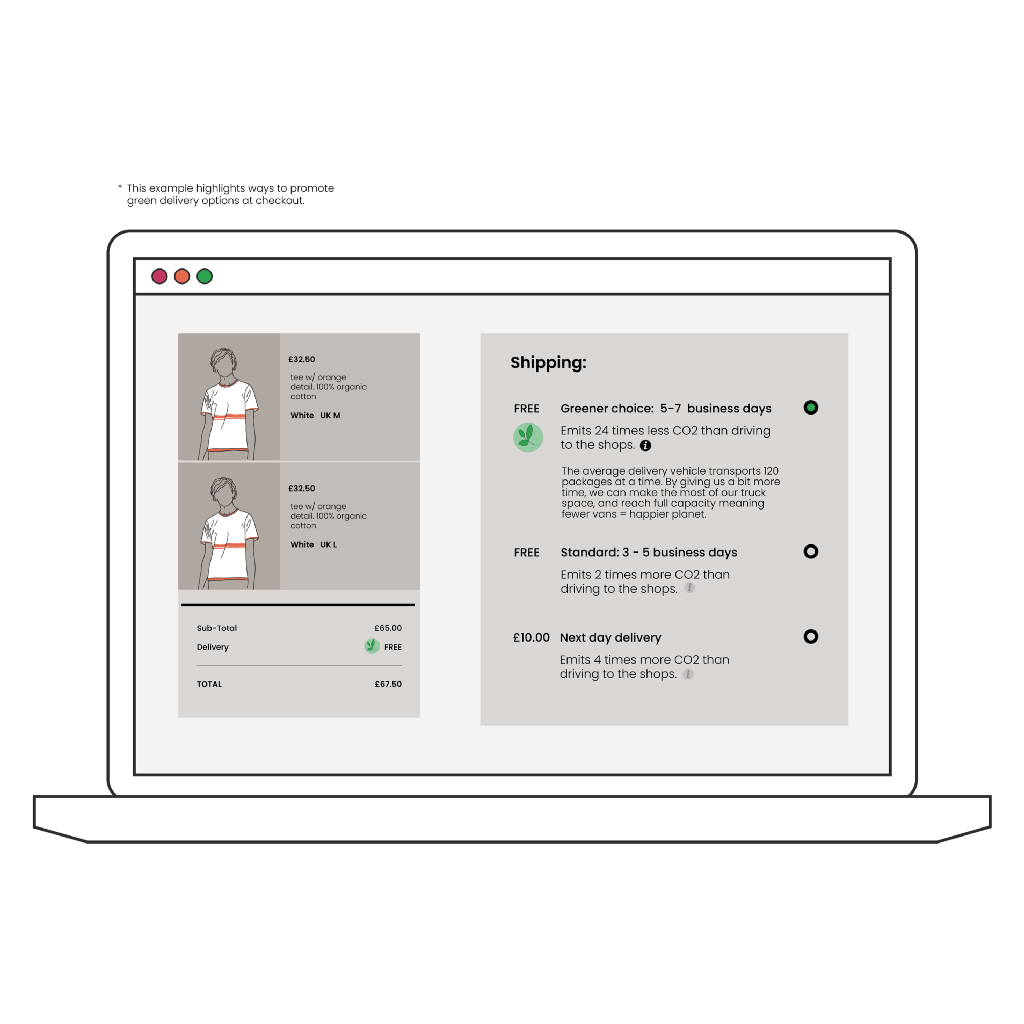We need to stop designing with blinders and scaling solutions designed for the individual

Betting on convenience to grow e-commerce
The number of parcels sent internationally has increased by 4.5 times in the last 6 years, from 43bn in 2014 to 131bn in 2020 (B2B, B2C, C2B). UK deliveries account for 4% of this number, making it the fourth highest buyer of e-commerce goods in the world. On Black Friday and for Christmas 2021 respectively, 83% and 67% of the UK’s shopping budget is expected to be spent online.
With shops closed during lockdown, online retail consumption shot through the roof. Couriers such as Amazon, Royal Mail and Hermes all reported double figure growth during the pandemic. There are multiple reasons for this increase in adoption: a wide and deep assortment of goods, lower prices, and free next day delivery and returns.
The way deliveries have been designed, around the principle of convenience, is also key in explaining the rise of e-commerce. At a macro level, this is especially problematic. Over-convenience and the insatiable need to have everything delivered at break-neck speed is overwhelming systems and having untold implications on the environment.
Convenient deliveries negatively impact our territories
In the last 30 years, CO2 emissions from vans on EU roads grew by 58%, but ‘only’ by 20% from cars. While cities try to control this, with the establishment of the Ultra Low Emission Zone (ULEZ) in London for example, there is a disparity between vans on the road and their environmental impact.
Among the top 10 ULEZ compliant vans sold in Europe, the difference in emissions can be 18 times greater from one van to another. Meanwhile, the pollution from these vehicles and last mile logistics, the transportation of goods from the fulfilment hub to their final destination, is: “expected to grow 78% between 2019 and 2030” according to the World Health Organisation.
Upstream logistics presents its own set of issues too, 20% of trucks on European roads are empty. Similarly, 3 out of 4 trucks in the USA are at below 51% loading capacity. Even pre-covid, WHO and McKinsey calculated that in some of the world’s largest cities, delivery vans would add 11 minutes to the average commute.
On top of this, more companies are opening local Micro Fulfilment Centres (MFCs). MFCs are small-scale warehouses, and dark stores (warehouses organised like stores but operating for deliveries only). While bringing products closer to home, the atomisation of fulfilment infrastructure threatens the local quality of life.
For example, Ocado is creating a MFC near a school in North London, concentrating vehicle pollution nearby. On the other hand dark stores are slowly replacing the local corner shop. This threatens access to goods and the livelihoods of small business owners; an integral part of the social fabric of communities.
The impact of convenience extends far beyond cities. Fulfillment: Winning and Losing in One-Click America by journalist Alec MacGillis is all about the redesign of rural land, to accommodate newfound shopping habits. This is dissected in Chloé Zhao’s Oscar-winning Nomadland too.
Home deliveries continue to impact the environment long after they reach your door. On average, 22% of packages in the UK were returned in 2019, a rise from the 14% average return rate in 2010. This also varies by industry, with fashion generating the highest rates of return, between 30% and 40%.
Crucially, returns follow different routes; in America, the average return travels 1200 miles, emitting 15mn Metric Tonnes of CO2 each year. It’s a similar story in Europe, with returned goods from Paris to Orléans, eventually reaching Slovakia. In addition to the pollution generated by transportation, about 5B lbs (2.2B kg) of packaging waste ends up in landfill — three times the amount of waste the entire city of Seattle generates in a year.
Convenient deliveries harm the people they’re “designed” to benefit
Last year, 5mn parcels were reported lost or stolen in the UK. Moreover, couriers themselves are usually paid per package and therefore pressured to work quickly. These workers often go hours without toilet breaks or emergency assistance to meet delivery promises.

One lesser-known fact about their working conditions is that drivers are contractors earning less than minimum wage, without any protection, sick days, paid holidays or other social advantages. That pressure is leading to a higher accident risk according to a recent UCL study. This led to a global strike by Amazon workers asking for an improvement in working conditions such as higher wages, the end of surveillance policies, and a review of break time, to name but a few issues.
Designing for humans, not customers
Today, companies’ business, service and logistics models are customer-centred. Their design aims to fulfil customers’ desires; people’s problems are often only studied in the light of business requirements. Product and service development revolves around increasing adoption, retention, and the frequency of purchase and less around who really needs e-commerce and next day delivery in the first place.
The convenience of online shopping and next day delivery is undeniable. It’s made products and services more accessible than ever, especially for vulnerable people, but home-deliveries at the current scale are not sustainable. This brings us to consider: what if deliveries were not customer-centred? What if the business model underpinning them did not prioritise immediate gratification, but instead provided a sustainable service, made of compromises, at scale?
To gain insight into this problem space, we launched a thought experiment. The goal was to reimagine services as if they were not designed to fulfil instantaneity but in symbiosis with their environment.
Thought #1 — What if logistics prioritised delivery efficiency instead of delivery speed?
Deliveries could be triggered when the number of packages to be delivered in a specific radius is reached. This would help reduce the number of half empty delivery vans, and ensure their space is optimised. To support this, and reduce waiting time, orders in urban areas could be delivered by pedal or electric bikes, covering a smaller radius, while deliveries in rural areas would still be covered by vans.
From a business point of view, the main challenge here is to rethink infrastructure. Instead of having large fulfilment hubs outside of cities, fulfilment centres could be smaller and more local or accessible. Being filled at night would halve congestion on the roads and the associated pollution. However, the location of these centres needs to be more carefully chosen. One option is to redevelop empty spaces unfit for retail or living. Here, considering communities will help avoid the current failings of existing dark stores. For recipients, there wouldn’t be a big change in the speed of delivery.
If customers would like to get their product(s) quickly, they could simply opt for bikes, filled faster than vans in our example. This shift in behaviour would impact the relationship customers have with deliveries.
Namely: they would become more aware of the delivery system, and the consequences of their decisions.
Thought #2 — What if self-serve lockers became commonplace?
While home deliveries increased accessibility to products, not everyone needs this kind of fulfilment, especially not all the time. A middle ground would be products ordered online made available nearby. The main hurdle concerns infrastructure and collaboration.
For non-home delivery to fly, lockers would have to be installed in convenient hotspots such as supermarkets, tube stations, Post Offices, etc. One thing to avoid is creating a complicated network: providing too many delivery locations. The second aspect is for companies to agree on using a common system. Without shared infrastructure and robust lines of communication between local pick-up points and logistics companies, the viability of this solution is low. For some companies, this might also mean serious technological investment. One option is a national approach, spearheaded and maintained by governments particularly when public places are being considered as nodes of logistics.
For customers, the major disruption is to convenience: they will need to think about collecting packages, and perhaps go out of their way to do so. The delivery of big packages such as home appliances could still be carried out on a door-to-door basis, but our purpose here is to question the scale of home deliveries, not remove them altogether.
Thought #3 — What if online retailers provided more transparency?
Circa 2007, deliveries were an additional cost and required extra time and thought to configure. Since then, brands have improved delivery speed and reduced their cost — making regular 3–5-day deliveries free and developing premium services such as ASOS Premier or Amazon Prime to drive extra value and next day fulfilment.
A side effect of this focus on convenience, and premium services, is that customers don’t see them, they’re invisible. While they’re paid for, people often don’t notice the monetary and environmental implications. These services might fulfil immediate customer needs, but don’t deliver on broader human needs.
A first step would be to educate people on the impact of their consumption through design and content. It’s not about shaming: it’s about being transparent. We can take inspiration from other industries, such as food or even travel — highlighting the “score” of products and services. In the food industry, a nutritional score is present on packaging to inform people about nutritional value.

Another example is the way services such as Skyscanner highlight “greener” flights. Ideally, the consideration wouldn’t only revolve around CO2 emissions, but other factors such as contribution to traffic congestion during peak hours. Companies like OddBox and Riverford are delivering during out of peak hours for instance.
A step further would be to directly suggest days/times for more responsible deliveries at check-out, and to follow Sainsbury’s lead of signposting deliveries with a lower environmental impact.
Thought #4 — What if we changed how customers think about returns?
Deliveries today revolve around the idea that customers can easily return items. Often, returns are free which drives behaviours such as bracketing (buying multiple items on purpose to return some). While this is great for customers, the environmental implications are seldom considered. Items returned often never make it back to shelves and are instead sent to landfill, incinerated, or shipped abroad. Moreover, returns add to a strained logistics system, one that’s already at breaking point, post-Brexit.
At some point, loss leading free returns will no longer be deemed profitable or a good vehicle for customer acquisition, more efficient reverse logistics will be created, or retailers will force them to do something else. One way out of this is to design better businesses, services and experiences in the first place.
More social forms of commerce in SEA and China already feature richer product information, visuals, and peer video reviews. Other options come from VR fitting or standardising the size of clothes. The goal is not to remove free returns altogether but to find a common ground, one that would satisfy customers by allowing them to return items, while also being conscious of changing the current attitude towards returns. One solution for today is to Buy Online, and Return In-Store.
Where do we start as designers?
80% of all product-related environmental impacts are determined during the design phase. Designers have a responsibility to find solutions that improve systems, not solutions that solely meet short term business and customer needs. One of the first steps we can take is to question customer-centred design. While it’s important to design for and with customers, designing faster deliveries because business models, design decisions and fufilment experiences have made customers think that’s what they need, isn’t a sustainable solution. An easy way to question this is to ask whether you’re designing for humans or users/customers. Human-centred design considers other people who are not a business’s customers and the planet as part of the design process. This means its purview is typically broader than UX or CX.To remedy the craving for immediacy, we must focus on the crux of the e-commerce conundrum and design for un-met or unarticulated people and planetary needs. This means making sure that we know when to stop, while keeping in mind that not everything needs to be optimised to the bone: threatening the system’s resilience.
Originally published on Foolproof blog in December 2021
Republished & amended in Feb 2022
Why e-commerce is failing people and the planet was originally published in UX Collective on Medium, where people are continuing the conversation by highlighting and responding to this story.